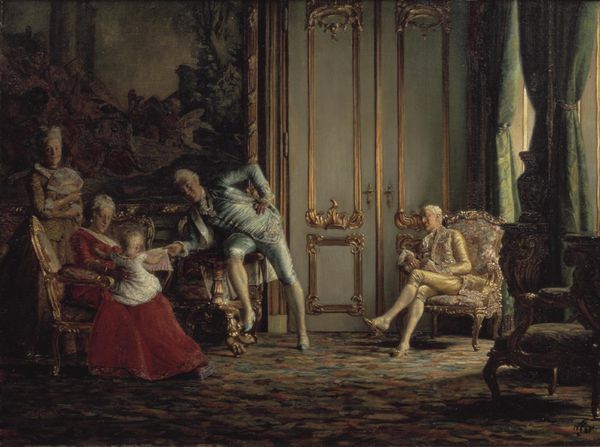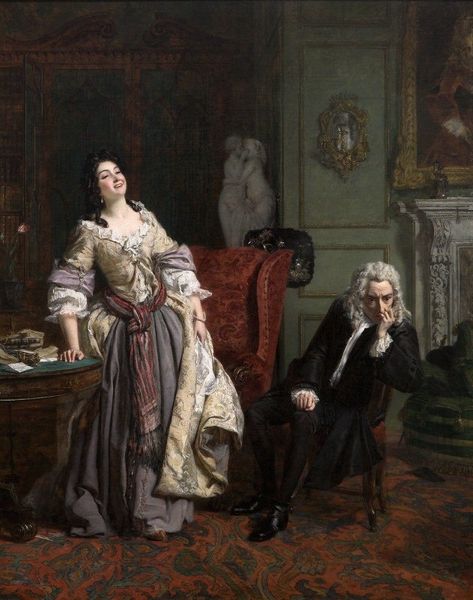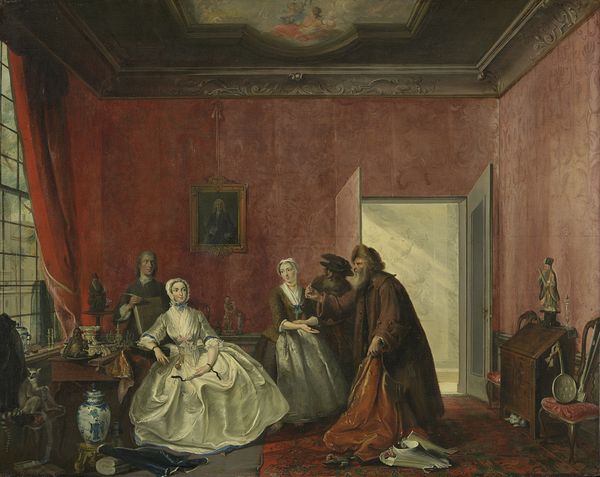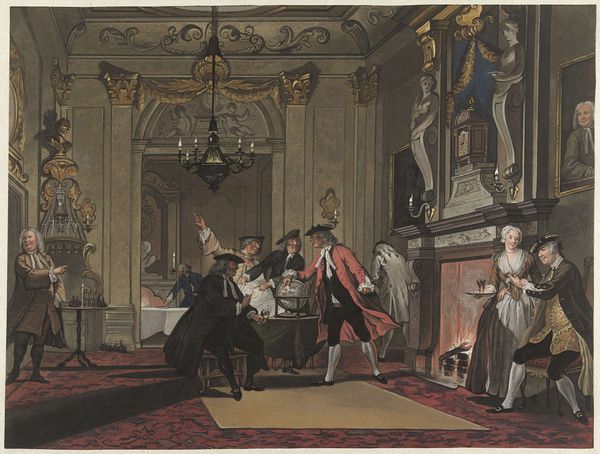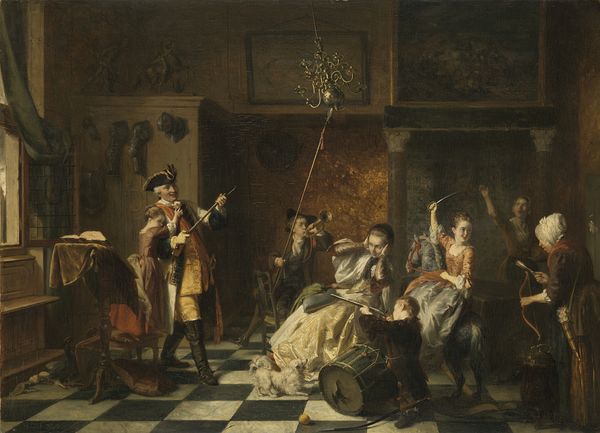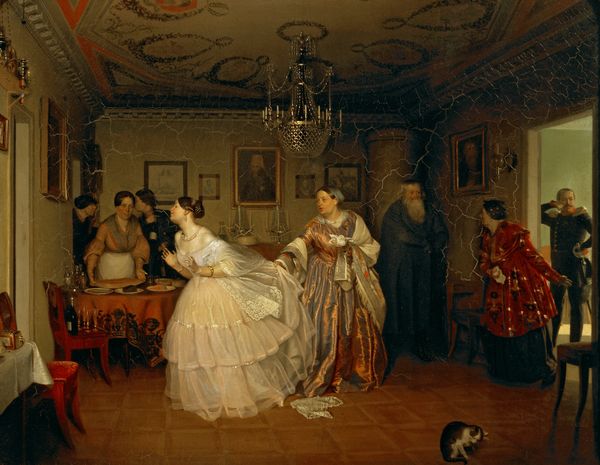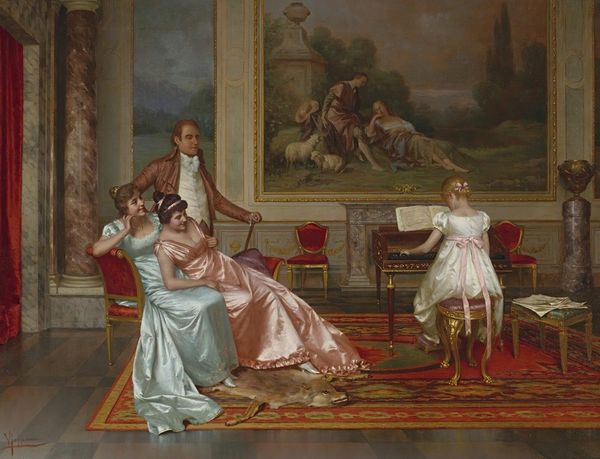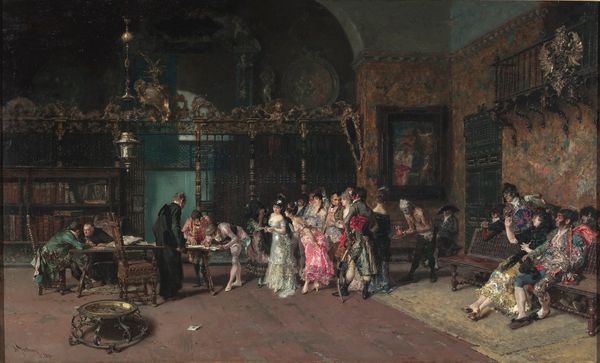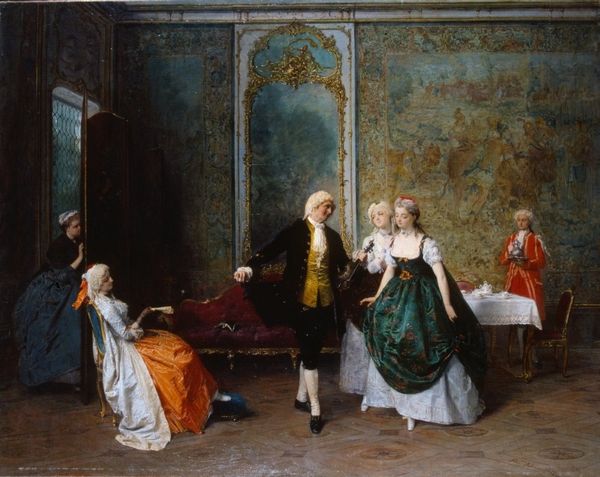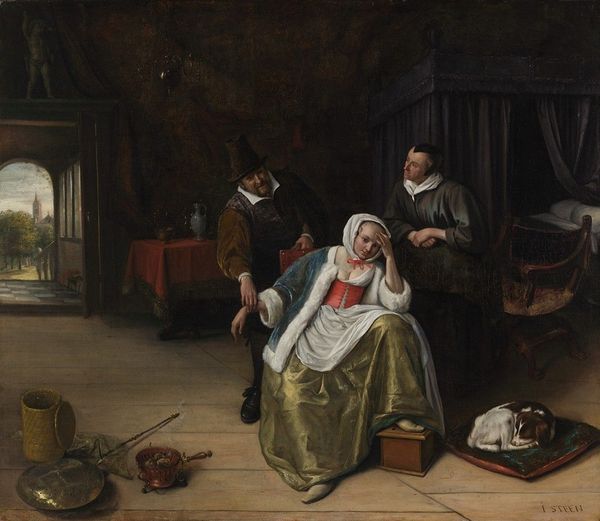
Copyright: National Gallery
William Hogarth created "Marriage A-la-Mode: 2, The Tête à Tête" to offer a window into 18th century British society. The series serves as a searing critique of arranged marriages within the upper class, driven by wealth and status rather than affection. In this scene, the morning after, we see the unraveling of a marriage. The husband lounges carelessly, suggesting a night of excess, while his wife throws herself back on the chair, seemingly in despair. The steward’s raised hands and multiple unpaid bills paint a stark picture of financial mismanagement. Hogarth masterfully weaves together visual cues to reveal a society obsessed with appearances, yet riddled with moral decay. Hogarth challenged the traditional norms of art by focusing on contemporary life and social issues. He said that he wished to “treat my subject as a dramatic writer, my picture as my stage”. The emotional complexity and the critique of social norms reflected in "The Tête à Tête" remains relevant, compelling us to reflect on the values that shape our relationships.
Comments
No comments
Be the first to comment and join the conversation on the ultimate creative platform.

